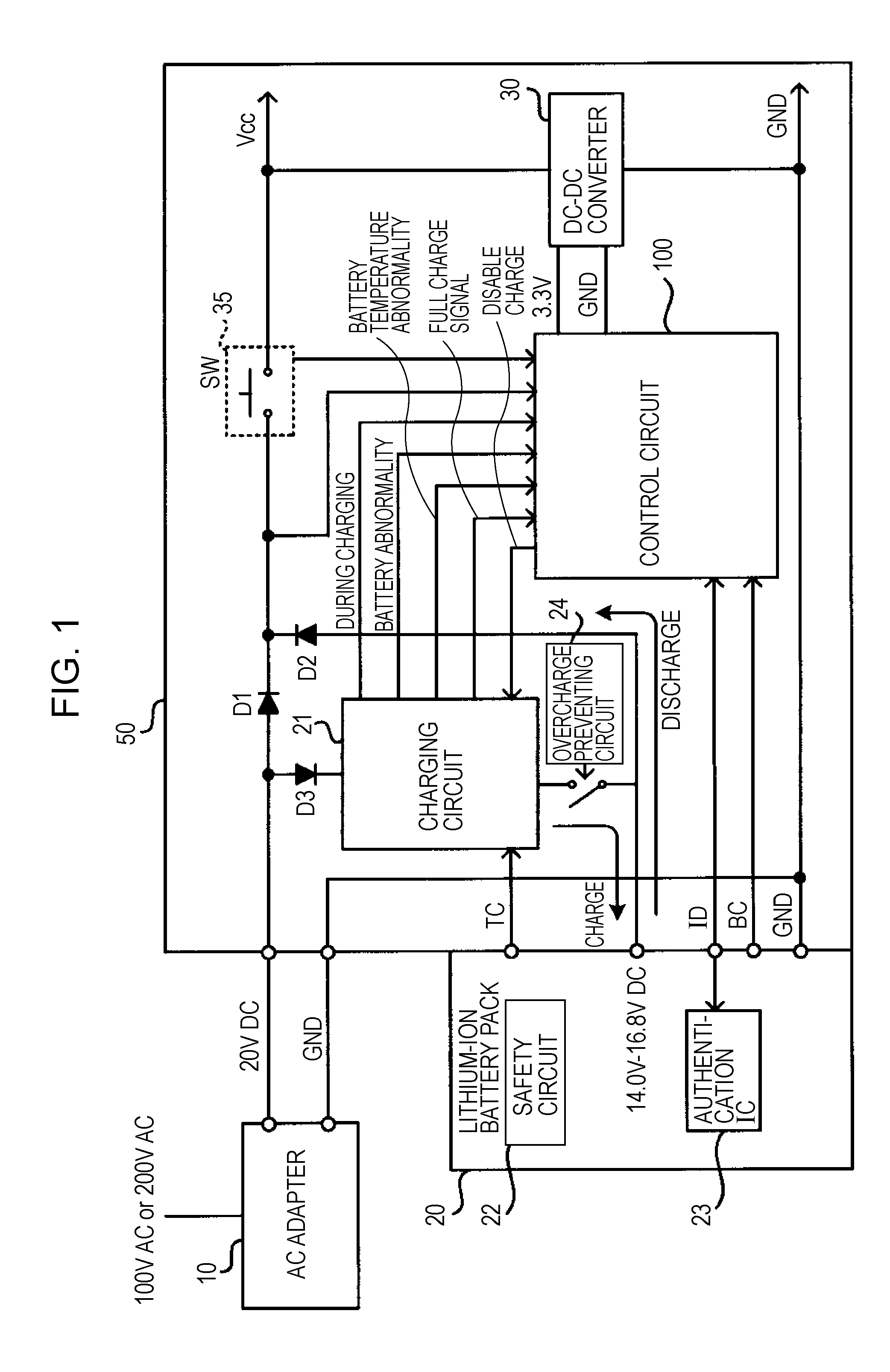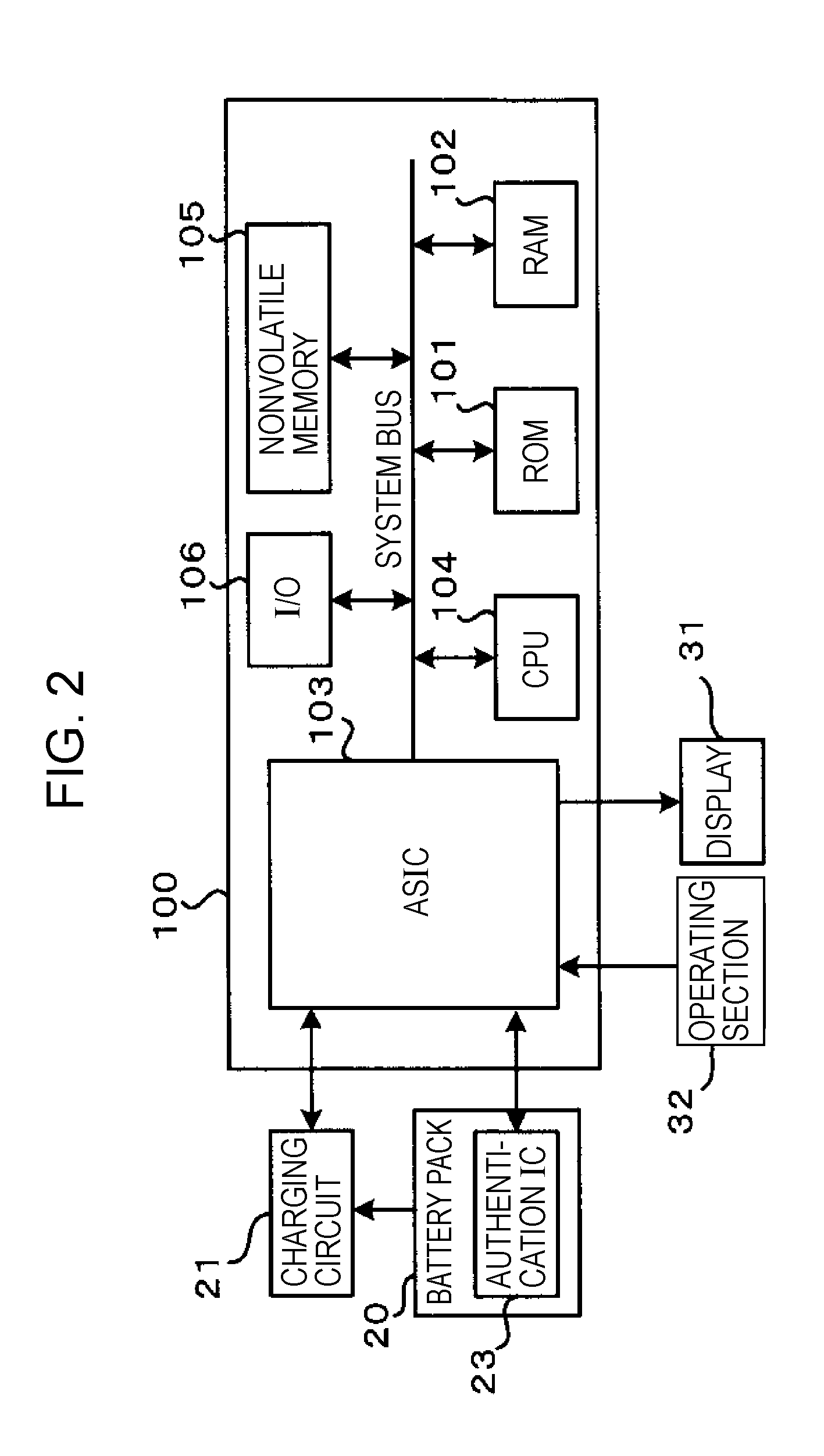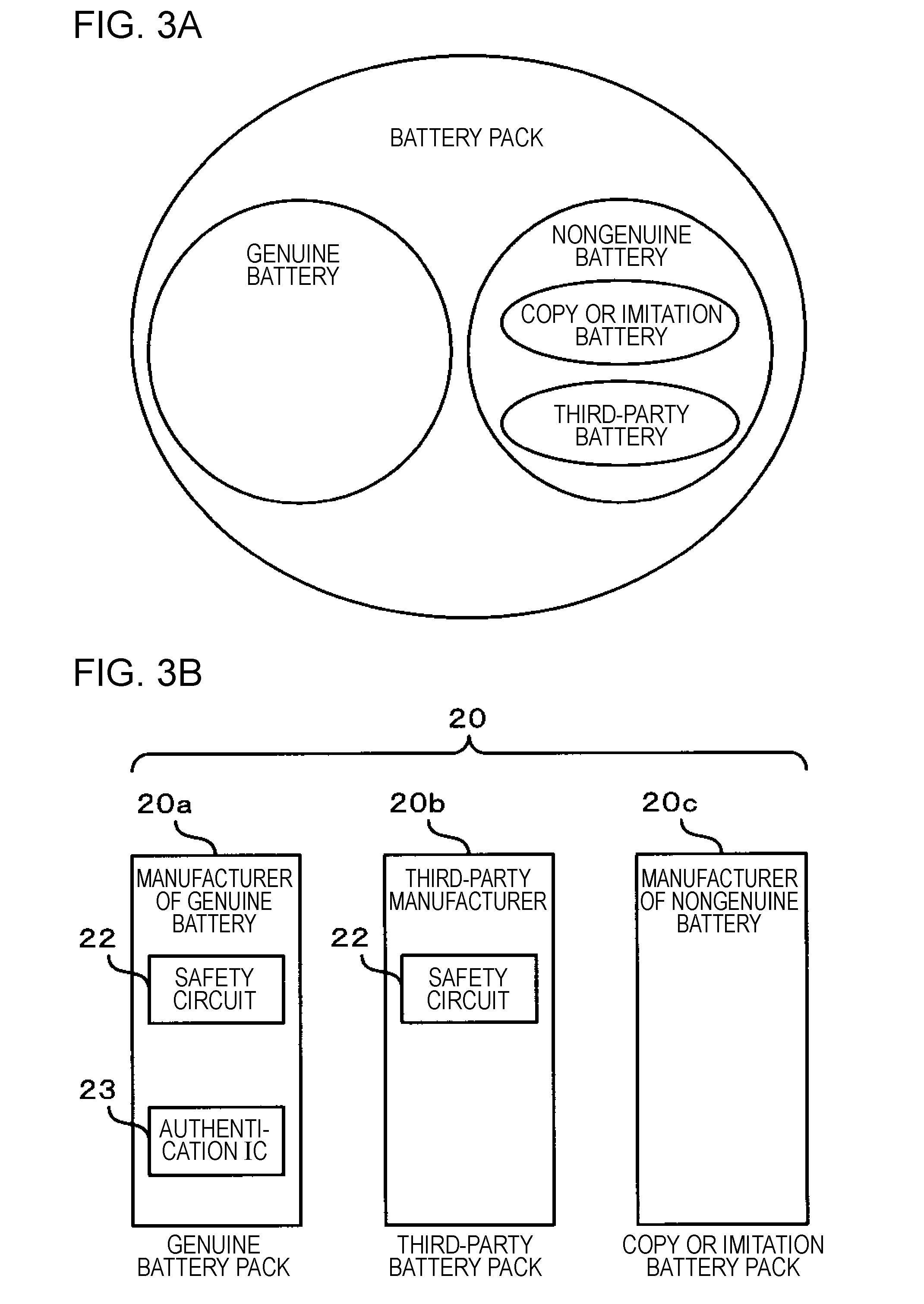Such electronic devices operable with a battery pack recently have the problem of an accident such as the rupture of the battery pack which may be caused by the use of a copy or
imitation.
Accordingly, the use of such copies or imitations can cause not only
abnormality of electronic devices but also abnormal
heat generation, ignition, or rupture due to
overcharge or the like.
Since such inferior copy or imitation battery packs are sold in the market as if they were genuine products, users who are going to buy a genuine battery pack often buy a copy or imitation by mistake.
It is difficult for users who are going to buy a battery pack to distinguish a genuine product from copies or imitations just equivalent to genuine products in appearance.
Moreover, it is not easy to completely prevent such inferior copy or imitation battery packs from circulating in the market.
Accordingly, accidents such as the rupture of battery packs that seems to be caused by copy or imitation battery packs have often happened.
On the other the hand, when the battery pack has not been authenticated, it means that the battery pack is not at least a normal genuine product.
However, further discrimination is impossible.
When the user recognizes that the battery pack is a genuine product, there is a high possibility that the battery pack is an abnormal genuine product or an inferior nongenuine product (copy or imitation) that imitates a genuine product, so that control for such battery packs is performed.
On the other hand, when the user recognizes that the battery pack is not a genuine product, there is a high possibility that the battery pack is a nongenuine product based on a genuine product (e.g., a battery pack made by a
third party) because it does not imitate a genuine product, so that control for such battery packs is performed.
In the former case, there is a high possibility that the battery pack is an abnormal genuine product or an inferior nongenuine product that imitates a genuine product.
Therefore, to continue the operation of the electronic device using the battery pack has a safety problem.
Thus, the discharging of the battery pack is disabled.
That is, when the battery pack is a nongenuine product based on a genuine product like a third-party battery pack, its battery characteristic can be inferior to that of a genuine product.
Thus, when the battery pack is a nongenuine product based on a genuine product and inferior to a genuine product in performance, this configuration can reduce the possibility of estimating the amount of remaining power of the battery pack more than the actual remaining amount.
On the other hand, when the battery pack has not been authenticated, it means that the battery pack is not at least a normal genuine product.
However, further discrimination is impossible.
When the user recognizes that the battery pack is a genuine product, there is a high possibility that the battery pack is an abnormal genuine product or an inferior nongenuine product (copy or imitation) that imitates a genuine product, so that control for such battery packs is performed.
On the other hand, when the user recognizes that the battery pack is not a genuine product, there is a high possibility that the battery pack is a nongenuine product based on a genuine product (e.g., a battery pack made by a
third party) because it does not imitate a genuine product, so that control for such battery packs is performed.
In the former case, there is a high possibility that the battery pack is an abnormal genuine product or an inferior nongenuine product that imitates a genuine product.
Therefore, to continue operation of the electronic device using the battery pack has a safety problem.
Thus, the charging and the discharging of the battery pack are disabled.
In the latter case, since there is a high possibility that the battery pack is a nongenuine product based on a genuine product, the discharging of the battery pack may be enabled but the charging is disabled because charging a nongenuine battery pack may cause rupture.
That is, when the battery pack is a nongenuine product based on a genuine product like a third-party battery pack, the battery pack can be used to operate the electronic device but the charging of the battery pack which may cause rupture under abnormal condition is disabled when connected to the electronic device.
However, if fully charged with the same amount of power as that of a genuine product, the non genuine battery pack may be overcharged.
This configuration can reduce the possibility of overcharging of a battery pack inferior in performance to a genuine battery pack.
That is, when the battery pack is a nongenuine product based on a genuine product, its battery characteristic can be inferior to that of a genuine product.
Thus, when the battery pack is a nongenuine product based on a genuine product and inferior to a genuine product in performance, this configuration can reduce the possibility of estimating the amount of remaining power of the battery pack more than the actual remaining amount.
When the user recognizes that the battery pack is a genuine product, there is a high possibility that the battery pack is an abnormal genuine product or an inferior nongenuine product (copy or imitation) that imitates a genuine product, so that control for such battery packs is performed.
On the other hand, when the user recognizes that the battery pack is not a genuine product, there is a high possibility that the battery pack is a nongenuine product based on a genuine product (e.g., a battery pack made by a
third party) because it does not imitate a genuine product, so that control for such battery packs is performed.
 Login to View More
Login to View More  Login to View More
Login to View More 


